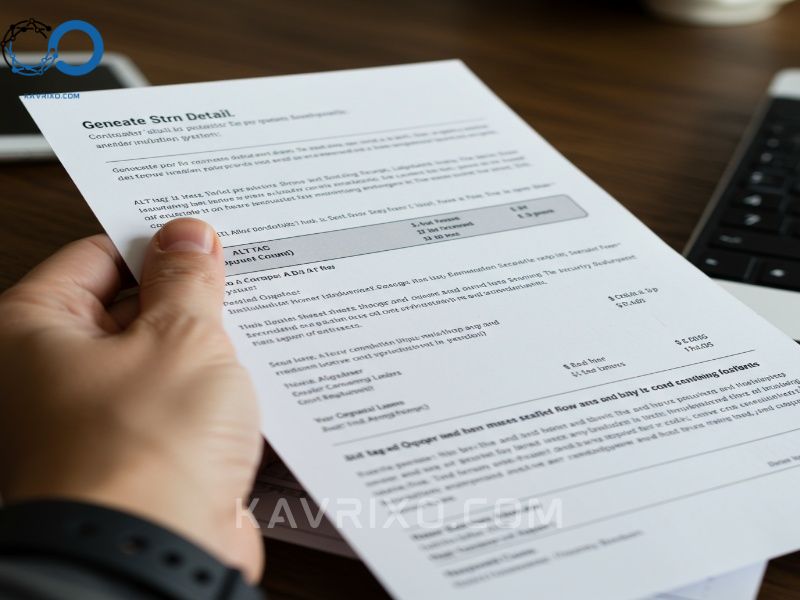Investing in a robust home security system is one of the most crucial decisions a homeowner can make. It’s not just about protecting valuable possessions; it’s about ensuring the safety of your family and achieving true peace of mind. However, the path to a secure home often starts with a complex question: what is the real home security installation cost?
Unlike buying a standardized appliance, determining the final price of a security system involves navigating a labyrinth of equipment tiers, installation complexities, monitoring contracts, and hidden fees. The final figure can swing wildly—from a few hundred dollars for a basic, self-installed kit to several thousand dollars for a comprehensive, professionally integrated smart home setup.
This comprehensive guide is designed to peel back the layers of pricing ambiguity, providing you with a detailed and transparent breakdown of the various financial factors contributing to the overall security system cost. We will explore everything from upfront hardware investments to ongoing alarm monitoring charges, ensuring you are fully equipped to make an informed budgeting decision.
Contents
- 1 Understanding the True Cost of Peace of Mind
- 2 Breakdown of the Home Security Installation Cost Components
- 3 Equipment Deep Dive: What Drives the Security System Cost?
- 4 The Recurring Expense: Alarm Monitoring Charges and Monthly Fees
- 5 Calculating the Average Cost of Security System Installation
- 6 Factors That Dramatically Influence Your Final Price
- 7 Making an Informed Decision: Getting Quotes and Vetting Providers
Understanding the True Cost of Peace of Mind
When homeowners begin researching security options, they often focus solely on the initial hardware price, only to be surprised by subsequent costs. To accurately budget for a secure home, you must differentiate between the immediate expenditures and the long-term financial commitments.
Initial Investment vs. Long-Term Expenses
The financial commitment for home security generally falls into two distinct categories:
- The Upfront Investment (Installation Price): This encompasses the one-time costs associated with getting the system operational. This includes the equipment itself (control panel, sensors, cameras), the labor required for professional installation, and any necessary activation or setup fees. This is where the home security system installation cost is most apparent.
- The Recurring Expense (Monitoring and Maintenance): These are the ongoing fees necessary to keep the system functioning effectively and ensure professional response in an emergency. This primarily revolves around alarm monitoring charges and connectivity fees.
Ignoring the second category is a common mistake that leads to budget overruns. The recurring costs, particularly the alarm system monthly fee, often eclipse the initial equipment costs over the lifespan of a multi-year contract.
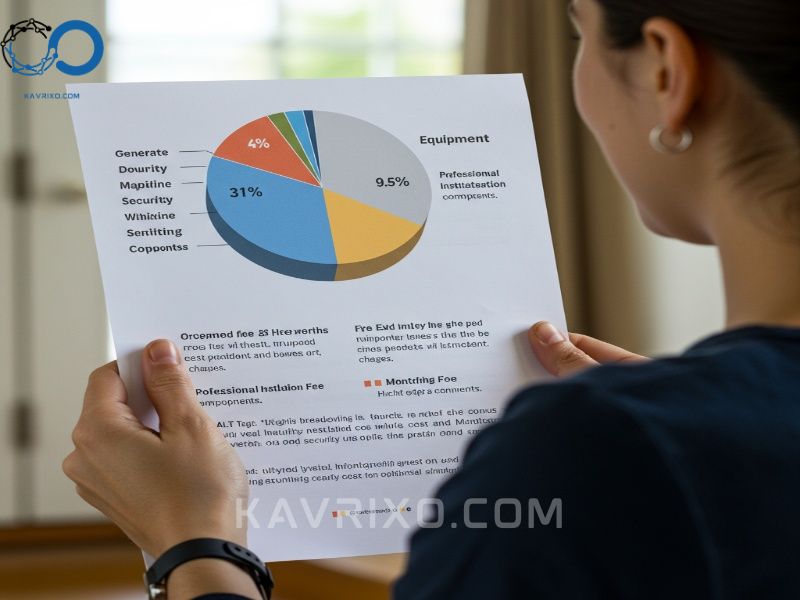
Breakdown of the Home Security Installation Cost Components
The total alarm system installation price is a composite figure built upon three primary pillars: equipment, labor, and local compliance. Understanding how these elements interact is key to predicting your final expenditure.
Equipment Costs: Packages vs. Customization
The hardware is arguably the most variable element of the security system cost. Providers typically offer two main routes: standardized packages or fully customized systems.
Standardized Packages
These are entry-level or mid-range bundles designed for typical homes or apartments. They usually include a control panel, two or three door/window sensors, a motion detector, and perhaps one key fob or indoor camera.
- Pros: Lower upfront security system cost, streamlined installation, and often discounted if tied to a long-term monitoring contract.
- Cons: Limited coverage for larger or uniquely shaped homes, leading to the need for costly add-ons later.
Customization and Add-Ons
For homes requiring extensive coverage (multiple levels, detached garages, many windows, or specialized protection like flood and fire detection), customization is necessary. Each additional component drives up the initial home security installation cost:
| Component Type | Average Unit Cost (Uninstalled) | Purpose |
| Door/Window Sensors | $20 – $50 | Essential entry point protection |
| Motion Detectors | $50 – $150 | Interior movement detection |
| Smart Cameras (Indoor/Outdoor) | $100 – $400 | Visual verification and surveillance |
| Glass Break Sensors | $75 – $120 | Detect high-frequency sounds of shattering |
| Smart Locks/Garage Controllers | $150 – $350 | Access control and integration |
| Environmental Sensors (Smoke/CO) | $50 – $150 | Life safety additions |
Labor and Professional Installation Fees
While DIY security systems have zero labor costs, professional installation carries a significant fee that must be factored into the overall cost of alarm system installation. This fee covers the time, expertise, and complexity of wiring (if applicable), configuring the network, and ensuring all sensors communicate correctly with the central hub and the monitoring station.
Professional installation pricing methods include:
- Flat Fee: A single charge, common for standard packages, often ranging from \$99 to \$499.
- Hourly Rate: Used for complex or high-end installations, where installers charge between \$75 and \$150 per hour. This method can significantly inflate the price if extensive wiring or complex network setup is required.
- “Free” Installation: Beware of systems advertised as having zero installation costs. These providers almost always recoup the labor costs by mandating a higher alarm system monthly fee or a longer, more restrictive contract term.
The size and complexity of your home directly impact the labor costs. A large, multi-story house requiring cameras to be mounted high up and hardwired systems to be run through walls will naturally incur a much higher labor fee than a small apartment using entirely wireless components.
Permits and Local Regulations
A frequently overlooked expense is compliance with local regulations. Many municipalities require homeowners to register their alarm systems to prevent excessive false alarms, which drain emergency resources.
- Permit Fees: These usually range from \$25 to \$75 annually or biannually.
- False Alarm Fines: If your system frequently triggers false alarms, local police departments may issue fines, which can escalate quickly, sometimes reaching hundreds of dollars per incident. Understanding the proper operation and maintenance of your system is crucial to avoiding these hidden costs.
Equipment Deep Dive: What Drives the Security System Cost?
To truly grasp the average cost of security system components, we need to look beyond basic sensors and understand the technological choices that influence pricing—particularly the choice between robust surveillance and smart home integration.
Essential Components: Control Panel, Sensors, and Communication
The foundational cost is determined by the quality and features of the central hub (control panel) and the sensors.
- Control Panel Quality: Basic panels are simple keypads. Advanced panels (often touchscreen) act as smart home hubs, integrating voice control, video previews, and sophisticated automation routines. These advanced hubs are significantly more expensive and elevate the initial home security installation cost.
- Sensor Technology: Basic magnetic contact sensors are cheap. More secure sensors utilize dual-tech detection (PIR and microwave) to reduce false alarms, increasing their unit price.
Advanced Surveillance Options (Cameras and DVRs)
The biggest driver of hardware cost inflation is often the inclusion of cameras, especially high-definition, outdoor, or specialized models.
- Camera Type:
- Indoor Cameras: Generally affordable, often powered via simple outlets.
- Outdoor Cameras: Must be weatherproof, often require more complex mounting, and include features like infra-red night vision and wider fields of view, substantially increasing the unit price.
- Video Doorbell Cameras: Essential for entry management, these are priced similarly to mid-range indoor cameras but require reliable Wi-Fi.
- Storage Method:
- Cloud Storage: Reduces initial hardware cost (no DVR needed) but increases the long-term alarm system monthly fee, as providers charge subscription rates for video storage capacity (e.g., storing 7 days vs. 30 days of footage).
- Local Storage (DVR/NVR): Higher upfront security system installation price due to the cost of the recorder and hard drives, but eliminates monthly cloud storage fees. This is often preferred for systems requiring high fidelity or extensive recording history.
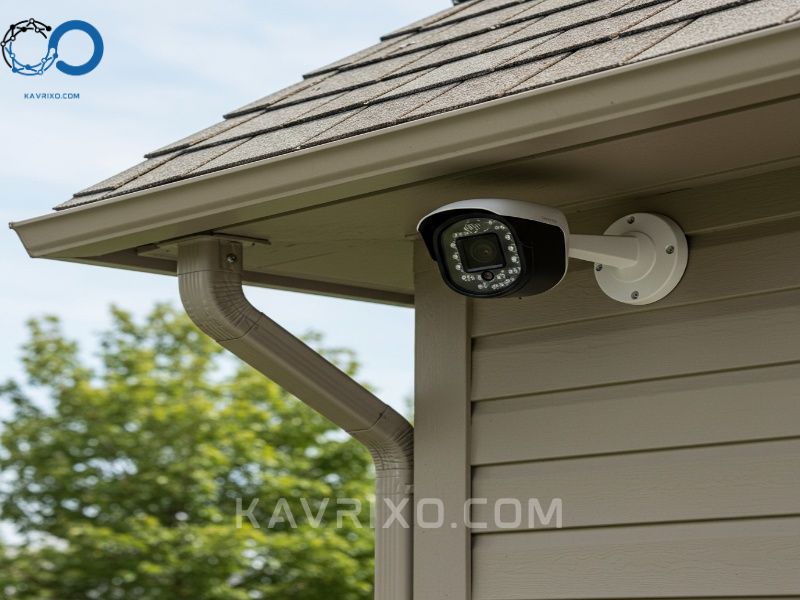
Smart Home Integration and Automation
Modern security systems are often intertwined with broader smart home ecosystems (e.g., Z-Wave, Zigbee, Apple HomeKit). While these integrations offer unparalleled convenience and control, they add complexity and cost.
- Interoperability Fees: Some proprietary systems charge extra to integrate third-party devices (e.g., smart thermostats or lighting controls).
- Enhanced Automation: Features like setting the lights to turn on when the alarm triggers, or locking all doors when the system is armed, require more sophisticated central processing units, pushing the security system cost toward the premium end.
Wired vs. Wireless Systems: Installation Impact
The choice between wired and wireless technologies dramatically affects both the equipment cost and the labor portion of the home security installation cost.
| Feature | Wireless System | Wired System | Impact on Cost |
| Equipment Price | Higher unit cost (due to batteries/transmitters) | Lower unit cost | Wireless: Higher initial hardware cost. |
| Installation Labor | Low (Peel-and-stick, minimal drilling) | High (Requires running cables through walls/attics) | Wired: Much higher labor cost (installation price). |
| Maintenance | Higher (Battery replacement every 1-5 years) | Lower (No battery maintenance) | Wired: Lower long-term maintenance cost. |
| Aesthetics/Complexity | Clean, easy to relocate | Invasive, requires patching and painting | Wired: Adds cost if major structural work is needed. |
For existing homes, the significantly lower labor required for wireless systems usually results in a lower overall cost of alarm system installation. However, in new construction, pre-wiring for a robust wired system can be more cost-effective and reliable over the decades.
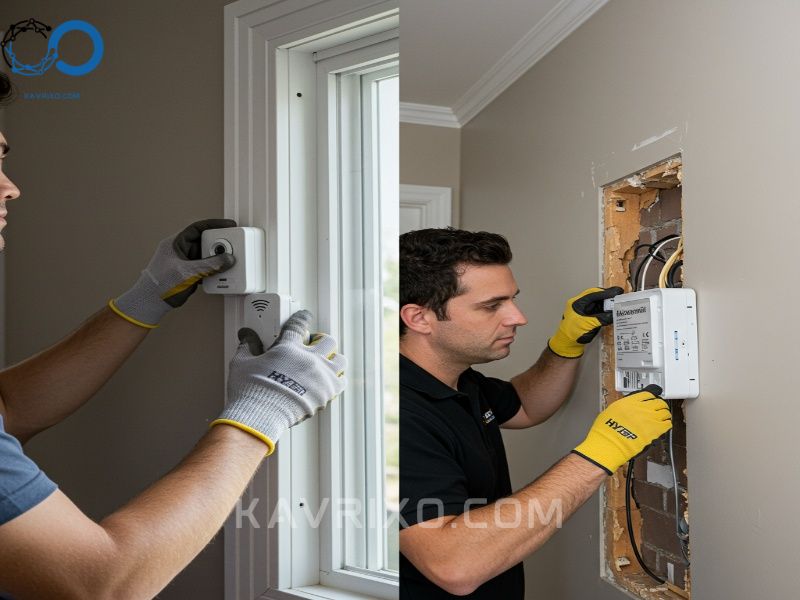
The Recurring Expense: Alarm Monitoring Charges and Monthly Fees
Once the physical system is installed, the most significant long-term financial factor is the recurring monitoring service. This is where the average cost of security system ownership truly lies.
Self-Monitoring vs. Professional Monitoring
The decision between self-monitoring and professional monitoring determines whether your system is merely a deterrent or a managed emergency response tool.
Self-Monitoring (No Monthly Fee)
In a self-monitored system, the alerts go directly to the homeowner’s phone via an app. If an alarm triggers, the homeowner is responsible for contacting the police or fire department.
- Cost: Zero alarm system monthly fee (outside of required internet/cellular service).
- Viability: Best for systems focused primarily on surveillance (checking in on pets, viewing package deliveries) rather than immediate emergency response.
Professional Monitoring (Required Monthly Fee)
Professional monitoring services connect your system to a central station staffed 24/7. When an alarm is triggered, the station verifies the alert and immediately contacts emergency services and the homeowner.
- Cost: This service incurs the mandatory alarm system monthly fee, which typically ranges from \$15 to \$60 per month, depending on the service tier.
Understanding Tiered Monitoring Plans
Professional monitoring is not a one-size-fits-all service. Providers use tiered plans that dramatically affect the alarm monitoring charges:
- Basic (Landline/Cellular Backup): The lowest tier, often covering basic intrusion detection and connection via a traditional phone line or basic cellular signal. Costs generally start around \$15–\$30.
- Interactive/Cellular (Standard): The most common tier. It includes cellular communication (vital if power or internet is cut), remote arming/disarming via a mobile app, and text/email alerts. Costs generally range from \$30–\$50.
- Premium/Smart Home (Comprehensive): This tier includes all standard features plus video verification, cloud video storage, smart home integration support, and often environmental monitoring (fire, flood, CO). This tier commands the highest alarm monitoring charges, often \$50–\$65+.
Contract Length and Cancellation Fees
The commitment period heavily influences the upfront home security installation cost.
- Long-Term Contracts (36–60 months): Providers often subsidize or eliminate the initial equipment and installation fees if you commit to a long contract. While this reduces your immediate expenditure, the long-term cost can be higher if the monthly rate is inflated. Early cancellation often results in severe penalties, sometimes requiring payment of 75% to 100% of the remaining contract balance.
- No-Contract/Month-to-Month: Popularized by DIY systems, these options require the user to purchase all equipment upfront at full retail price. While the initial security system cost is higher, they offer flexibility and lower long-term financial risk.
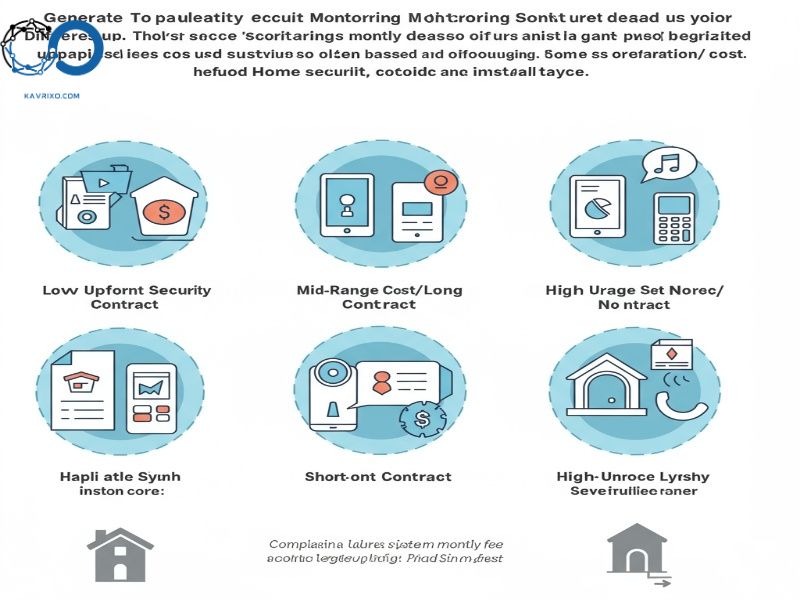
Calculating the Average Cost of Security System Installation
To provide a practical budgeting framework, here are three common scenarios illustrating the spectrum of home security system installation cost and ongoing expenses.
Scenario 1: DIY Wireless Systems (The Budget Option)
- Goal: Basic intrusion detection and smartphone control for a small property.
- Equipment: Starter kit (hub, 3 sensors, 1 motion detector). Purchased retail.
- Upfront Cost (Equipment): \$250 – \$600
- Installation Labor: \$0 (Self-installed)
- Monitoring: Self-monitored or basic professional monitoring (often optional).
- Monthly Fee: \$0 (Self) or \$15 – \$35 (Basic Pro)
- Total Initial Home Security Installation Cost: \$250 – \$600
Scenario 2: Mid-Range Professional Install (The Standard Option)
- Goal: Comprehensive coverage for a three-bedroom home, including two cameras and cellular backup.
- Equipment: 1 control panel, 7 sensors, 2 motion detectors, 2 outdoor cameras.
- Upfront Cost (Equipment): Subsidized or full cost, depending on the contract. (\$400 – \$1,200)
- Installation Labor: Flat fee. (\$99 – \$299)
- Monitoring: Interactive cellular plan (3-year contract required).
- Monthly Fee: \$40 – \$55
- Total Initial Home Security Installation Cost (Installation Price): \$500 – \$1,500
Scenario 3: High-End, Integrated Smart Homes (The Premium Option)
- Goal: Fully integrated system for a large, multi-level home, featuring hardwired perimeter protection, extensive video surveillance (DVR), and full smart home automation.
- Equipment: Custom-designed system including DVR/NVR, 10+ hardwired points, multiple high-end cameras, and smart locks.
- Upfront Cost (Equipment): Full retail price for specialized components. (\$2,500 – \$6,000+)
- Installation Labor: Hourly rate due to wiring complexity. (\$800 – \$2,500+)
- Monitoring: Premium video verification plan (flexible contract).
- Monthly Fee: \$55 – \$75+
- Total Initial Home Security Installation Cost (Installation Price): \$3,300 – \$8,500+

Factors That Dramatically Influence Your Final Price
While equipment and monitoring form the backbone of the home security installation cost, several external factors can either inflate or deflate your final budget.
Home Size and Layout Complexity
A sprawling ranch home requires more sensors than a two-story colonial of the same square footage simply because the perimeter is larger. Furthermore, complex architectural features, such as multiple skylights or irregularly placed windows, necessitate specialized sensors or more strategic camera placement, directly increasing the cost of alarm system installation due to complexity and equipment count.
- Interior Doors: Do you need internal doors monitored (e.g., safe rooms, liquor cabinets)? Each door adds to the equipment count.
- Accessibility: If the installation requires specialized equipment (tall ladders, attic work) due to high ceilings or complex wiring runs, labor time and cost will increase.
Geographical Location and Installer Rates
Just like general contractor pricing, the security system installation price varies significantly based on regional economic factors. Installers in major metropolitan areas (e.g., New York, Los Angeles) typically charge higher hourly rates for labor than those in smaller suburban or rural markets. This geographical variance can affect the total cost by 10% to 20%.
Furthermore, local competition matters. In areas with many competing national and local security providers, pricing pressure may keep the average cost of security system installation lower.
Insurance Discounts and Rebates (Offsetting Costs)
While security systems are an expense, they often provide financial relief elsewhere. Most homeowner insurance companies offer substantial discounts (typically 5% to 20%) for properties protected by professionally monitored security and fire systems.
- Savings Calculation: If your annual premium is \$2,000, a 15% discount saves you \$300 per year. Over a five-year contract, this \$1,500 in savings can effectively offset a significant portion of the initial home security installation cost or several years of the alarm system monthly fee.
- Requirements: Ensure your system meets the insurer’s criteria. Most require 24/7 professional monitoring and often demand verified alarm systems to qualify for the maximum discount.
Making an Informed Decision: Getting Quotes and Vetting Providers
Given the wide range in potential costs, securing the best deal involves thorough research and strategic negotiation. Do not settle for the first quote, especially if the provider is heavily subsidizing the equipment with the expectation of locking you into a long-term, high alarm monitoring charges contract.
Questions to Ask Before Signing a Contract
When evaluating quotes for home security system installation cost, ensure you receive a line-item breakdown covering all potential expenditures:
- Is the Equipment Purchased or Leased? If leased, what happens at the end of the contract? Do you own the hardware, or must you return it? (This impacts your ability to switch monitoring providers later.)
- What is the Total Cost of Ownership (TCO)? Ask for a five-year TCO calculation, including the upfront security system installation price plus 60 months of the alarm system monthly fee.
- What is the Early Termination Fee? Understand the financial penalty if you need to move or cancel the service prematurely.
- Are Service Calls and Maintenance Included? Many contracts include a limited warranty on equipment, but labor for service calls or technical support may be extra.
- Is the Monitoring Cellular or Internet-Based? Ensure the quote includes robust cellular backup, which is essential for reliability and typically increases the alarm monitoring charges.
By meticulously analyzing these factors—from the initial hardware investment and labor fees to the crucial, long-term alarm system monthly fee—you can navigate the complexities of the security market and determine the home security installation cost that truly fits your needs and budget, securing your home without financial surprises.
